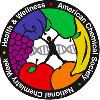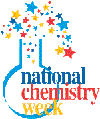Understanding Nutrition and Obesity: Print Resources
This is a collection of print resources about nutrition and obesity. A separate collection of Electronic Resources is also available.
Below are outstanding and recommended titles by the National Science Teachers Association that fit this year’s theme for National Chemistry Week. Descriptions are based on reviews from the NSTA web site.
Key: E = Elementary (K–5), I = Intermediate (6–8), HS = High School (9–12), C = College, G = General Public
- HEALTH SCIENCE PROJECTS ABOUT NUTRITION. Robert Gardner. Berkeley Heights, NJ: Enslow Publishers, 2002. 112 pp. ISBN 0-7660-1442-8. (I, HS)
- This book describes 26 simple activities that would be a good source
of enrichment ideas for a traditional course, inspiration for science
fairs, or demonstrations for a teacher. In a world where critical
thinking is a must, these activities provide students an opportunity
to practice their skills. Each basic activity is followed by
interesting extensions. The language is clear, and the terminology is
appropriate to the level. Safety is emphasized in each experiment.
Source: NSTA Recommends - HEALTHY FOODS FROM HEALTHY SOILS: A HANDS-ON RESOURCE FOR EDUCATORS. Elizabeth Patten and Kathy Lyons. Gardiner, ME: Tilbury House Publishers, 2003. 256 pp. ISBN 0884482421. (E, I)
- Fundamental to good health is good nutrition. This book is a treasure
chest of information and activities to help teachers teach nutrition
in their classrooms. Students are invited to create sock puppets, review
garden basics through songs, write a health diary, calculate and compare
prices based on nutrients, or build a model of the digestive tract.
Through these activities students can learn where food comes from, how
to make good food choices, and how to garden and compost. Background
information provides a wealth of information for better understanding
the nutritional and scientific content of activities. Each lesson is
correlated to National Science Education Standards, grade level and
curriculum content alignment. There are practical helps for preparation
and literature links. Lessons are so clearly explained that it would
not take much effort to generate labs to accompany the vast array of
engaging explorations.
Source: NSTA Recommends - TASTING IN LIVING THINGS. Karen Hartley, Chris Macro, and Philip Taylor. Chicago, IL: Heinemann Library, 2000. 32 pp. ISBN 157572250-X. (E)
- This book invites children to explore their own senses and to compare
them with other animals. It includes suggestions for hands-on
discovery activities. This book outlines the processes and structures
involved in the human sense of taste. It also explores different
mechanisms of chemical detection employed by other species.
Photographs and illustrations are bright, clear, and appealing.
It shows people of all ages, ethnic heritages, and disabilities.
Source: NSTA Recommends - 101 QUESTIONS ABOUT FOOD AND DIGESTION THAT HAVE BEEN EATING AT YOU…UNTIL NOW. Faith Hickman Brynie. Frederick, MD: Twenty-First Century Books, 2002. 176 pp. ISBN 0761323090. (I, HS)
- This comprehensive treatment of important topics in human nutrition
and digestion covers topics adolescents need to understand, like
vegetarianism, food additives, food cravings, and anorexia. These
topics, which are seldom covered in life science books, are addressed
in an appealing question-and-answer format. The writing style is clear
and concise; however, knowledge of basic chemistry would facilitate
understanding of some of the concepts. Readers learn what food is,
how the digestive system works, and what causes certain bodily
functions such as constipation, diarrhea, and burping. The book also
addresses the relationship between food and health, covering topics
like cholesterol, fiber, fast food, and butter versus margarine.
Pathogenic conditions like vomiting, heartburn, gallstones, anorexia
nervosa, and bulimia are included, as is food safety. The potential
of certain foods for lowering cholesterol and preventing heart
attacks and cancer is also discussed. The book includes source notes,
a glossary, and a list of sources for further information.
Source: NSTA Recommends
Copyright © 2004 American Chemical Society


